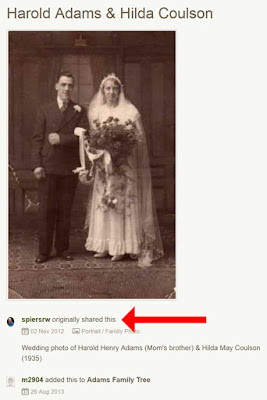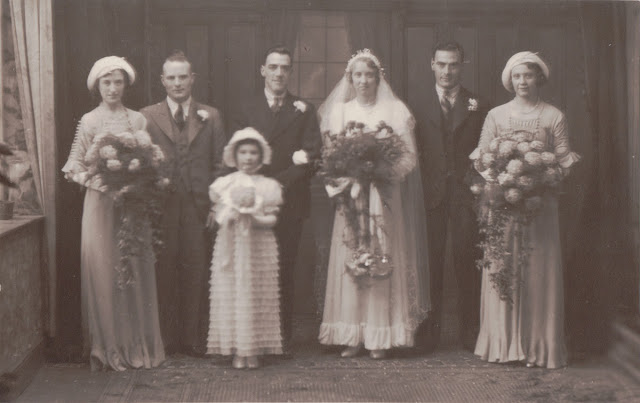It’s been almost two years since I tested my dna on ancestry.com. Since then, I have done four more tests for cousins there, and I have administered two tests on Family Tree DNA. I have downloaded raw data, and uploaded it to GEDMATCH and other sites. I am far from an expert in dna, in fact, I am quite the amateur, but I have been intrigued by what I have learned of it; it has affected the way I do my research; and it has introduced me to several hundred new cousins! I thought the Worldwide Genealogical Collaboration participants and readers might be interested in this journey.
For this blog post, I am going to concentrate on the autosomal dna that I did through ancestry. Since I keep my family tree there, it is a great enrichment to my research and findings. I have about 4000 matches to my dna on ancestry! The matches are arranged by closeness of kinship, with parents, brothers and sisters and 1st cousins listed before 2nd , 3rd, and 4th and more distant cousins/relatives. Most of those matches are attached to a family tree I can consult. You are also given dna circles, I have eleven of those which have shown me incredible things which I will explain below. You can also search your matches by surnames or by location, or by both. It is amazing to me!
Ancestor confirmed by autosomal dna, by Linda Geddes on ancestry.com
|
First, let me tell you about the dna circles. I have eleven of these as I said, I am including a detailed description of what ancestry’s dna circles are and how they are created from ancestry.com at the end of this post, hope it is helpful. But one of the most exciting things about these charts of your dna matches, is that it can give you new relatives, as it did me! Ancestry explains it like this, “Descendants of an ancestor often inherit pieces of DNA from that ancestor, and they may share those pieces with other descendants. If these descendants are in a DNA Circle for their ancestor, you can get a New Ancestor Discovery to a DNA Circle, even if you don’t have this ancestor in your tree.”
I was amazed by my circles. Let me give you just one example. I looked at my 11 circles on ancestry, and one was titled the “Cuthbert Cheely DNA Circle”. That surprised me because I had no Cheelys in my tree at the time, and had never heard of this man, whom ancestry said was my 4th great grandfather! There are five “members” in this dna “circle”, I have some with ten members. When I looked at one of the matches, this is the chart I saw: My maiden name is Helen Spear Youngblood by the way, that’s me on the bottom left in this chart.
I was shocked, because my family did not know who the father of my great- grandfather was! My Great-Grandfather, Walter Thomas Houchins was born in 1854 of a single mother which we knew,and could clearly be seen in the censuses. William W. Stoops lived on the farm next door to my 2nd great-grandmother Nancy Houchins, and was actually her boss at work it appeared. On one census, when Walter Thomas was 16, he can be seen on the census living with his neighbor, we now know as his father! It looked like he was just working there. In 1880, after all of her seven children were born and mostly adults, Nancy and William W. Stoops married. Why then I wonder? Elizabeth Cheely was William’s mother, and Cuthbert was her father--a family mystery solved, and new 3rd and 4th grandparents identified, all from a dna test! Previously, I had consulted a professional genealogist, a genealogical society in Walter Thomas Houchins area of birth, collected marriage, death, military and census records, none of which helped me identify his father! Now with no research on my part, my dna circle identifies him, wow!
I have discovered many new relatives through my dna! One thing ancestry does is list all of your dna matches with “shared ancestry hints” separately from all of your matches, even if they are not in a circle. I have 63 of them. When I look at this list exclusively, the first one was also my first match when exploring my Scottish Hogue family! Turns out she is my 3rd cousin, lives in Pennsylvania compared to my North Carolina, and we’ve become good friends on facebook. She is also experienced in genealogy, so we have enjoyed searching for our Hogue family origins in Scotland together! Actually, I formed a Hogue research group on facebook , almost totally made up of Hogue cousins I met through my dna on ancestry. There are two from California, two from Connecticut, one from New Jersey, Colorado, Tennessee, Wisconsin, Virginia, Florida, and my North Carolina of course! We even have a member from England and one from Scotland! We are stretched across the USA and the world, truly a genealogical collaboration! We were all already interested in genealogy and dna, now we are letting it guide us through our history.
There are so many stories I could tell, and so many experiences I’d like to share, but it is not possible in this one blog post. However, I feel I’d be remiss not to tell you how incredibly the dna dovetails with my normal research. I was helping my cousin’s fiance research his family tree as a gift for them, when several things happened. One, I got to a brick wall in one of his lines. I had learned to check my dna matches for everything, so in this case, I did exactly that, and bingo, discovered I was related to this young man via this line, and that my dna took the line further by connecting me to a researcher with thousands of people in his tree and this line! I even saw that his line connected to some Mayflower relatives that I already had in my tree, and was easily able to share this exciting news with him.
Here is another example of using my dna for research-- say I am looking for information about my great-great grandfather James Steptoe Langhorne. I could search all the family trees on ancestry for clues, or I can search my dna for the surname Langhorne, and search my matching dna trees/people for information. If I am searching a family tree that I know already matches my dna, well then, anything I learn will surely match me, and that is a step forward in my research!
What can I say--dna has changed and enriched my life and my research! It has added hundreds of friendly new cousins, many of them now facebook and ancestry friends! We have learned to research together, and my research alone is more efficient. It is so exciting and interesting to me.. If you have questions, I will try to answer them, or find someone who can. Thanks for reading and please share your thoughts with me. Helen
-----------------------------------------------------------------------------------------------------------------------------------------------------------------------------------------------------------------
Ancestry explains dna circles this way: (http://help.ancestry.com/app/answers/detail/a_id/9120/kw/dna%20circles)
“A DNA Circle is a group of individuals who all have the same ancestor in their family trees and where each member shares DNA with at least one other individual in the circle. These circles are created directly from your DNA and your family tree in a five-step process.
1. Find DNA matches
We compare your DNA to the DNA of every AncestryDNA member. When we find enough shared DNA to suggest that you and another member have inherited that DNA from the same recent ancestor, we consider you a "DNA match." Based on the amount of DNA you share, we then estimate your relationship (for example you may be 5th or 6th cousins).
2. Search trees for shared ancestors
Once we've found a DNA match, we carefully search both of your family trees looking for ancestors who appear to be the same person. We consider facts like name, birthdate, birthplace, parents, and spouse (going back nine generations).
3. Calculate a shared ancestor hint confidence score
We consider a variety of factors to determine how likely it is that you and your match share DNA from this same ancestor (as opposed to sharing DNA common to a region, or sharing DNA from a different ancestral line).
4. Add more people to the DNA Circle
Now, we repeat the process and look for other pairs of individuals who have the same shared ancestor in their trees and who share DNA with one or more of existing circle members (each circle has at least three members). Some of these new members may not share DNA with you, but each member of the circle has DNA evidence supporting their relationship to the share ancestor, and therefore to you.
5. Calculate connection levels
Last, we figure out a connection level for every member of the circle based on the number of people they match in the circle and the strength of their connections. It's a simple way to show how likely it is that each member is a descendant of the shared ancestor. Levels go from Strong to Good, Weak, or Emerging.
DNA Circles will change over time
You'll notice that DNA Circles are constantly evolving. A circle could grow, shrink, or even disappear. And new circles will be created too. This all happens for a couple reasons. First, AncestryDNA members are constantly growing and improving their family trees. Second, as new people take tests and join AncestryDNA, we have even more information to analyze and use to improve our circles and help you fill in even more pieces of your family history puzzle.
Note: What if you aren't a member of a DNA Circle for one of your ancestors? One possibility is that you descended from the ancestor, but you didn't inherit DNA from them. Another explanation is that more descendants need to take the AncestryDNA test before there's enough evidence to create a circle.”




























